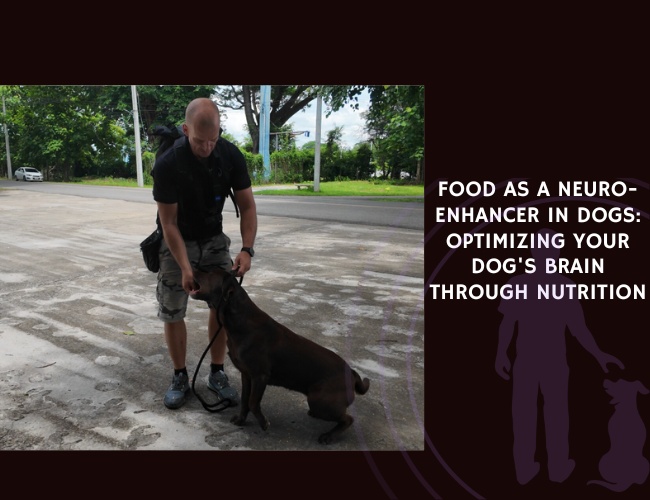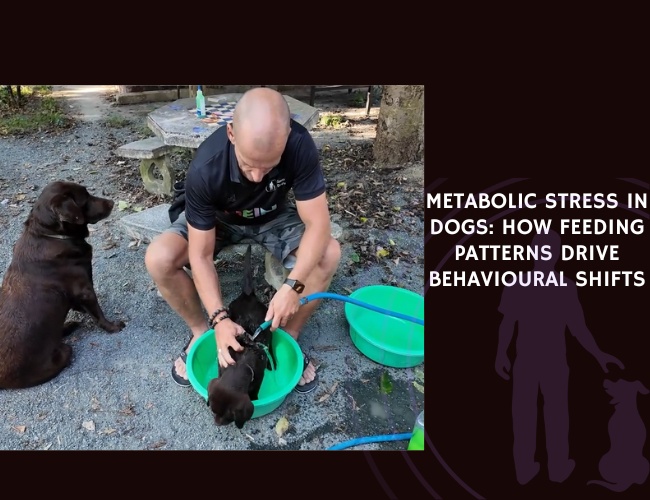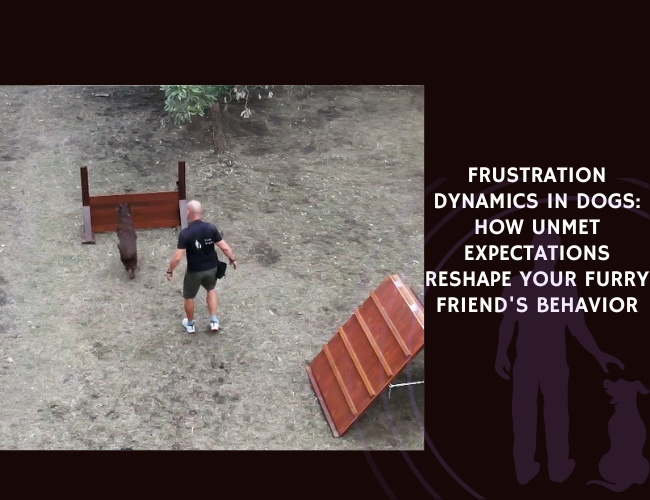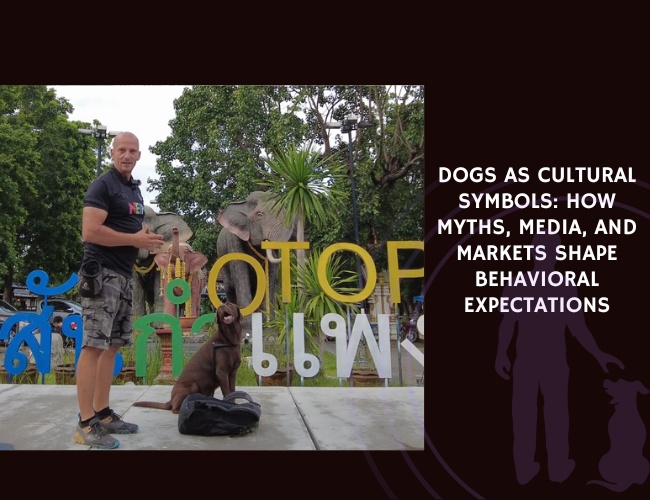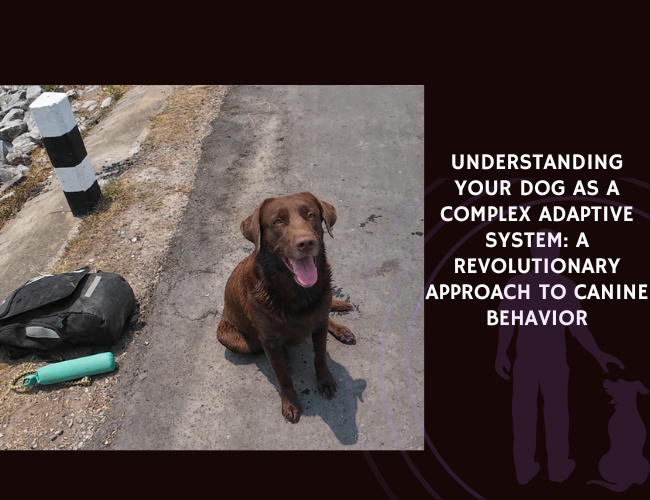Introduction
Every dog owner has witnessed the remarkable transformation of their furry friend from a tiny, helpless puppy into a wise senior companion. This journey isn’t just about physical growth—it’s a fascinating evolution of behavior, personality, and cognitive abilities that unfolds predictably yet uniquely for each individual dog. Understanding these behavioral patterns across your dog’s lifespan can help you provide better care, strengthen your bond, and anticipate changes before they become concerning.
Did you know that your dog’s personality begins forming within the first few weeks of life? Or that certain behaviors displayed in puppyhood can predict adult temperament? Let us guide you through the incredible behavioral journey from those first wobbly steps to the golden senior years, exploring how genetics, environment, and your interactions shape who your dog becomes.
Core Behavioral Traits at Different Life Stages
The Neonatal to Puppy Stage (0-3 months): Building the Foundation
Your puppy’s first three months of life represent the most critical period for behavioral development. During this time, rapid neurological changes create windows of opportunity that will influence behavior for years to come. What happens during these twelve weeks sets the stage for your dog’s entire behavioral repertoire—from how they handle stress to how they interact with you and the world around them.
The Neonatal Period (0-2 weeks): A World of Touch and Smell
Imagine being born into complete darkness and silence, relying only on warmth, touch, and scent to navigate your world. This is your puppy’s reality for the first two weeks of life. During this period, their brain is only 10% of its adult weight, but it’s growing at an astonishing rate.
Neonatal puppies exhibit several fascinating reflexive behaviors:
- Rooting reflex: When touched on the face, they turn toward the stimulus seeking milk
- Sucking reflex: Automatic nursing behavior triggered by oral contact
- Anogenital reflex: Elimination occurs only when stimulated by mother’s licking
- Negative geotaxis: Puppies crawl upward on inclined surfaces to find warmth
These aren’t simply cute puppy behaviors—they’re evolutionary adaptations ensuring survival. The mother’s licking doesn’t just keep puppies clean; it stimulates circulation, aids digestion, and triggers the release of growth hormones. Without this stimulation, puppies can fail to thrive despite adequate nutrition.
The Transitional Period (2-3 weeks): Awakening to the World
Week two to three marks a dramatic transformation. Your puppy’s eyes begin to open around day 10-14, though vision remains blurry for several more days. Did you know that puppies are born with blue eyes? The true eye color doesn’t develop until 8-10 weeks as melanin production increases.
During this transitional phase, remarkable changes occur:
- Ear canals open (days 12-17), bringing the first experience of sound
- First wobbly attempts at walking replace crawling
- Tail wagging begins, though initially without social meaning
- First teeth emerge, preparing for eventual weaning
- Startle response develops, showing functioning hearing
The brain is now forming millions of neural connections daily. Environmental enrichment during this period—gentle handling, varied textures, mild temperature changes—literally builds a more complex, adaptable brain. Studies using MRI technology show that gently handled puppies develop larger hippocampi (memory centers) and more robust prefrontal cortices (executive function areas).
The Socialization Period (3-12 weeks): Windows of Wonder
At three weeks, your puppy enters what scientists call the “critical period” for socialization. This isn’t just important—it’s absolutely fundamental to creating a well-adjusted adult dog. During this time, the fear response hasn’t fully developed, allowing puppies to approach new experiences with curiosity rather than caution.
Weeks 3-5: Primary Socialization The focus remains on canine relationships:
- Play fighting begins, teaching bite inhibition through squeals and corrections
- Body language develops: play bows, tail positions, ear movements
- Hierarchies form through gentle competition for resources
- Vocal communication expands: barks, growls, whines with different meanings
The role of littermates cannot be overstated. Single puppies or those separated early often struggle with:
- Reading canine body language
- Controlling bite pressure
- Managing frustration
- Appropriate play behavior
Weeks 5-8: Human Socialization Window This is when puppies begin forming crucial bonds with humans:
- Individual personality emerges: bold vs. cautious, independent vs. clingy
- Human handling becomes critical: 5 minutes daily per puppy minimum
- Novel experiences shape future reactions: different people, gentle restraint, surfaces
- Problem-solving begins: simple barriers, finding hidden toys
Research by Dr. Michael Fox showed that puppies handled for just 3 minutes daily from birth to 5 weeks showed:
- Accelerated physical development
- Enhanced learning ability
- Better stress tolerance
- Stronger human bonds
- Improved trainability
Weeks 8-12: Secondary Socialization Often called the “human socialization period,” this is when puppies typically join their new families:
- Fear responses emerge but remain moderate
- Learning capacity peaks: puppies can learn basic commands
- Social referencing begins: looking to humans for guidance
- Environmental exploration intensifies
- Sleep patterns organize into more adult-like cycles
The Neurological Symphony
Understanding what’s happening in your puppy’s brain during these weeks helps explain why early experiences matter so profoundly. The process involves:
Myelination: Nerve fibers develop fatty sheaths that speed signal transmission. This process follows a specific pattern:
- Spinal cord and brainstem (basic functions)
- Cerebellum (movement coordination)
- Limbic system (emotions and memory)
- Cortex (higher thinking)
Synaptic Pruning: The brain initially overproduces neural connections, then “prunes” unused ones. Experiences determine which connections strengthen and which disappear. A puppy exposed to children develops robust neural pathways for child interaction; one who never meets children may lose this capacity.
Neurotransmitter Development: Chemical messaging systems come online at different times:
- Weeks 0-3: Basic systems (breathing, heart rate)
- Weeks 3-7: Emotional regulation systems
- Weeks 7-12: Complex learning and memory systems
Critical Windows and Their Consequences
The concept of critical periods isn’t just theoretical—it has profound practical implications:
Vision Development (3-12 weeks)
- Puppies kept in darkness during this period become functionally blind
- Exposure to varied visual stimuli creates better depth perception
- Movement detection abilities develop through watching moving objects
Sound Processing (3-16 weeks)
- Early exposure to varied sounds prevents noise phobias
- Puppies need graduated exposure: household sounds → outdoor sounds → loud sounds
- Music exposure may enhance auditory discrimination
Social Species Recognition (3-10 weeks)
- Puppies form templates of “acceptable social partners”
- Those exposed only to dogs may fear humans
- Multi-species exposure (dogs, humans, cats) creates flexibility

The Trauma Paradox
While we emphasize positive experiences, mild stress actually benefits development. The key is “optimal stress”—challenges that push development without overwhelming the system. Examples include:
- Brief separation from mother (minutes, not hours)
- Gentle restraint during handling
- Novel but safe environments
- Mild temperature variations
Puppies exposed to optimal stress show enhanced:
- Stress hormone regulation
- Learning ability
- Emotional resilience
- Immune function
- Adult confidence
However, severe stress or trauma creates lasting damage:
- Chronic elevation of stress hormones
- Reduced brain volume in key areas
- Impaired learning ability
- Increased fear and anxiety
- Compromised immune function
The Role of Sleep
Newborn puppies sleep 90% of the time, and this isn’t wasted time. During sleep:
- REM sleep (50% in neonates vs. 25% in adults) consolidates learning
- Growth hormone releases primarily during deep sleep
- Neural connections strengthen and organize
- Immune system develops and strengthens
Sleep deprivation during early development causes:
- Impaired learning and memory
- Increased irritability and reactivity
- Reduced impulse control
- Compromised physical growth
Epigenetics: How Experience Changes Genes
Perhaps most remarkably, early experiences don’t just shape behavior—they alter gene expression. This field, called behavioral epigenetics, reveals that:
- Maternal care quality affects stress gene expression
- Early enrichment activates learning and memory genes
- Trauma can silence genes related to emotional regulation
- These changes can persist across generations
For example, puppies whose mothers show high levels of licking and grooming develop:
- More glucocorticoid receptors (better stress management)
- Enhanced hippocampal development (improved memory)
- Increased BDNF production (brain plasticity factor)
- Better methylation patterns (healthier gene expression)
Creating Optimal Early Experiences
Understanding this science, how can breeders and early puppy raisers optimize development?
Environmental Enrichment Protocol
- Week 1-2: Gentle handling, varied holding positions, mild temperature changes
- Week 3-4: Different textures (carpet, tile, grass), gentle sounds, visual stimuli
- Week 5-6: Obstacle courses, hidden food, problem-solving toys
- Week 7-8: Car rides, different people, grooming introduction
- Week 9-12: Expanded experiences, puppy classes, varied environments
The Bio-Sensor Program Developed by the U.S. Military, this program involves brief, specific stimulations from days 3-16:
- Tactile stimulation (toe tickling)
- Head held erect
- Head pointed down
- Supine position
- Thermal stimulation (cool surface)
Each exercise lasts 3-5 seconds, once daily. Results include improved:
- Cardiovascular performance
- Stress tolerance
- Disease resistance
- Learning ability
Preventing Future Problems
Many adult behavioral issues trace back to inadequate early experiences:
Lack of Early Handling → Touch sensitivity, grooming difficulties, veterinary stress Single Puppy Syndrome → Poor bite inhibition, inappropriate play, social deficits Limited Human Exposure → Fear of strangers, difficulty bonding Restricted Environments → Environmental phobias, neophobia Early Trauma → Anxiety disorders, aggression, compulsive behaviors
By understanding these connections, you can either prevent problems through proper early management or recognize the source of issues in rescue dogs with unknown histories.
The Microbiome Connection
Recent research reveals another crucial aspect of early development: the gut-brain axis. The puppy’s developing microbiome influences:
- Neurotransmitter production
- Stress response
- Immune function
- Behavioral development
Factors supporting healthy microbiome development:
- Natural birth (vaginal delivery seeds beneficial bacteria)
- Maternal milk (contains prebiotics and antibodies)
- Exposure to diverse environments
- Avoiding unnecessary antibiotics
- Contact with healthy adult dogs
This is why responsible breeders now consider:
- Probiotic supplementation for mothers
- Natural whelping when possible
- Delayed first vaccines when appropriate
- Outdoor exposure from early age
The Weaning Transition
Weaning represents more than dietary change—it’s a major behavioral transition:
Natural Weaning Process (4-8 weeks)
- Mother initiates by standing while nursing
- Puppies begin sampling solid food
- Nursing sessions shorten and become less frequent
- Complete weaning typically by 7-8 weeks
Behavioral Changes During Weaning
- Increased independence
- Enhanced exploration
- Strengthened peer relationships
- Development of food preferences
- Beginning of resource awareness
Abrupt weaning causes:
- Increased anxiety
- Oral fixations
- Difficulty self-soothing
- Potential for resource guarding
- Compromised immune function
This is why gradual, mother-led weaning produces more emotionally stable puppies. 🐾
The Juvenile Stage (3-12 months): Exploration and Learning
Welcome to the roller coaster phase! Your juvenile dog is like a toddler and teenager rolled into one—curious, impulsive, and testing boundaries at every opportunity. This period brings dramatic physical growth, hormonal changes, and cognitive development that can leave even experienced dog owners feeling bewildered. One moment your puppy is sweetly cuddling, the next they’re redesigning your garden with excavation projects or “redecorating” your shoes.
Understanding the Adolescent Brain
The juvenile period coincides with significant neurological restructuring. Your dog’s brain is literally rewiring itself, which explains much of the seemingly erratic behavior you might observe. During this phase:
The Prefrontal Cortex Lag The area responsible for impulse control and decision-making develops last, while the emotional and reward-seeking centers mature earlier. This creates a perfect storm where your dog:
- Knows the rules but “forgets” them when excited
- Shows brilliant problem-solving one moment, complete lack of sense the next
- Displays extreme reactions to minor stimuli
- Seeks thrills and novel experiences compulsively
Neurotransmitter Fluctuations Dramatic changes in brain chemistry occur:
- Dopamine surges create intense reward-seeking behavior
- Serotonin fluctuations affect mood stability
- GABA (calming neurotransmitter) receptors decrease temporarily
- Testosterone and estrogen begin influencing behavior
These chemical changes mean your previously calm puppy might suddenly become reactive, your focused student might become easily distracted, and your confident pup might show unexpected fears.
Critical Fear Periods: Windows of Vulnerability
Fear periods represent times when your dog’s brain is particularly susceptible to forming lasting negative associations. Understanding these helps you protect your juvenile dog during vulnerable phases:
First Fear Period (8-11 weeks) Often coinciding with adoption, this period requires gentle handling:
- Single negative experiences can create lifelong phobias
- Positive experiences have equally powerful beneficial effects
- Recovery from scary experiences may take several days
- Social support from humans speeds recovery
Signs your puppy is in a fear period:
- Sudden wariness of familiar objects
- Reluctance to explore
- Startling at normal household sounds
- Clinging behavior or hiding
- Regression in confidence
Second Fear Period (6-14 months) This adolescent fear period often catches owners off-guard:
- Previously confident dogs suddenly fear familiar things
- Duration varies from days to several weeks
- Intensity varies by individual and breed
- May occur in multiple waves
Managing fear periods effectively:
- Avoid forcing interactions with scary stimuli
- Create positive associations from a distance
- Maintain routine to provide security
- Use calming techniques (gentle massage, quiet environments)
- Document triggers to track patterns

The Evolution of Play
Play behavior in juveniles becomes increasingly sophisticated, serving crucial developmental functions:
Social Play Complexity What starts as simple puppy wrestling evolves into complex social negotiations:
- Role reversal: Taking turns being chaser/chased
- Self-handicapping: Larger dogs playing gently with smaller ones
- Meta-signals: Play bows, play faces, exaggerated movements
- Conflict resolution: Learning to de-escalate when play gets too rough
Play Styles and Personality By 6 months, distinct play preferences emerge:
- Body slammers: Physical, wrestling-oriented play
- Chasers: Speed and pursuit games preferred
- Tuggers: Object-focused competitive play
- Boxers: Pawing and sparring behaviors
- Cheerleaders: Vocal, bouncy play solicitation
Understanding your dog’s play style helps you:
- Choose appropriate playmates
- Provide suitable toys and games
- Recognize normal vs. problematic play
- Meet exercise needs effectively
Object Play and Cognitive Development Object play peaks during juvenility, serving important functions:
- Problem-solving skills develop through puzzle toys
- Frustration tolerance builds when objects don’t cooperate
- Motor planning improves with complex toy manipulation
- Possessiveness can emerge without proper guidance
The Notorious “Zoomies” Frenetic Random Activity Periods (FRAPs) peak during juvenility:
- Usually occur at predictable times (evening, after baths)
- Last 1-5 minutes typically
- Indicate excess energy or emotional release
- Normal but need safe space to prevent injury
Hormonal Influences on Behavior
Sexual maturity brings profound behavioral changes, typically beginning around:
- Small breeds: 6-9 months
- Medium breeds: 7-12 months
- Large breeds: 9-15 months
- Giant breeds: 12-24 months
Male Hormonal Changes Testosterone levels rise dramatically, causing:
- Urine marking behaviors (leg lifting)
- Increased interest in other dogs’ scents
- Roaming tendencies if unneutered
- Same-sex dog tensions may emerge
- Mounting behaviors (not always sexual)
- Territorial awareness develops
Female Hormonal Changes First heat cycle brings:
- Mood fluctuations before and after heat
- Nesting behaviors during false pregnancy
- Increased irritability around other females
- Attraction behaviors toward males
- Protective tendencies over resources
The Learning Paradox
Juvenile dogs display a fascinating learning paradox—they’re simultaneously at their most trainable and most challenging:
Enhanced Learning Capacity
- Rapid skill acquisition: Can learn complex behaviors quickly
- Creative problem-solving: Think outside the box
- Pattern recognition: Excellent at connecting contexts
- Long-term memory formation: Strong retention of experiences
Learning Challenges
- Attention deficits: Easily distracted by environment
- Impulse control issues: Know but can’t always do
- Inconsistent performance: Brilliant one day, clueless the next
- Testing behaviors: Deliberately pushing boundaries
Effective Training Strategies for Juveniles
- Short sessions (5-10 minutes) multiple times daily
- High-value rewards to compete with distractions
- Environmental management to set up for success
- Patience with regression – it’s temporary!
- Focus on life skills over tricks
Social Development Continues
While the primary socialization window closes around 14 weeks, social learning continues throughout juvenility:
Peer Relationships
- Best friend formations: Strong preferences for specific dogs
- Play group dynamics: Learning social hierarchies
- Communication refinement: Subtle body language develops
- Conflict navigation: Learning to avoid or resolve disputes
Human Relationships
- Selective bonding: Choosing favorite people
- Trust deepening: Or eroding based on experiences
- Working partnerships: Beginning of true cooperation
- Independence assertions: Testing relationship boundaries
Environmental Confidence Juveniles need continued positive exposure to:
- Novel environments: New parks, stores, friends’ homes
- Challenging surfaces: Stairs, grates, wobble boards
- Weather conditions: Rain, wind, snow experiences
- Crowds and chaos: Farmer’s markets, pet stores
- Unusual objects: Wheelchairs, skateboards, umbrellas
The Exercise Equation
Juvenile dogs have enormous energy, but their growing bodies need protection:
Safe Exercise Guidelines
- 5-minute rule: 5 minutes of forced exercise per month of age, twice daily
- Self-directed play: Unlimited (puppy chooses to rest)
- Mental exercise: Often more tiring than physical
- Swimming: Excellent low-impact option
- Avoid: Repetitive jumping, long runs on hard surfaces
Signs of Over-exercise
- Excessive panting after rest
- Limping or stiffness
- Reluctance to play
- Behavioral regression
- Sleep disruption
Mental Stimulation Needs Juvenile brains crave challenges:
- Puzzle feeders: Increasing difficulty levels
- Scent work: Hide and seek games
- Training challenges: New behaviors weekly
- Environmental enrichment: Rotating toys, changing layouts
- Social puzzles: Playmates with different play styles
Breed-Specific Developmental Patterns
Breed genetics significantly influence juvenile development:
Herding Breeds (Border Collies, Australian Shepherds, Corgis)
- Motion sensitivity emerges: Chasing children, bikes, cars
- Control behaviors develop: Nipping heels, circling
- Intense focus capabilities appear
- Frustration when unable to control movement
- Need outlets for mental energy more than physical
Guardian Breeds (Great Pyrenees, Anatolian Shepherds, Mastiffs)
- Aloofness increases with strangers
- Territorial awareness develops
- Night activity patterns emerge
- Independent thinking becomes pronounced
- Slow mental maturation (puppyish until 2-3 years)
Terriers (Jack Russells, Pitbulls, Westies)
- Prey drive intensifies dramatically
- Determination becomes apparent
- Dog selectivity may emerge
- Resource awareness increases
- Need appropriate outlets for natural behaviors
Sporting Breeds (Retrievers, Pointers, Spaniels)
- Oral fixation peaks (must carry things)
- Environmental awareness heightens
- Cooperative tendencies strengthen
- Energy levels spike dramatically
- Excel with structured activities
Common Juvenile Challenges and Solutions
Understanding typical challenges helps you respond appropriately:
Destructive Chewing Why it happens:
- Teething discomfort (until 6-7 months)
- Exploration and learning
- Boredom or excess energy
- Anxiety or stress
Solutions:
- Appropriate chew toys rotated daily
- Puppy-proofing revisited
- Increased mental stimulation
- Addressing underlying anxiety
Jumping on People Why it happens:
- Seeking attention and interaction
- Excitement overflow
- Learned that jumping works
- Natural greeting behavior
Solutions:
- Teach incompatible behavior (sit for greetings)
- Manage exciting situations
- Consistency from all humans
- Reward four-on-floor behavior
Selective Hearing Why it happens:
- Adolescent brain development
- Competing motivations
- Incomplete training foundation
- Environmental distractions
Solutions:
- Practice in gradually increasing distractions
- Higher value rewards
- Shorter distance recalls
- Long-line for safety while learning
Resource Guarding Emergence Why it happens:
- Natural survival instinct
- Learned from competition
- Anxiety about resources
- Genetic predisposition
Solutions:
- Trade games from early age
- Abundance mindset (plenty for all)
- Professional help if severe
- Management to prevent practice
The Regression Period (7-10 months)
Many owners panic when their previously well-behaved juvenile suddenly “forgets” everything. This temporary regression is normal and reflects:
- Brain reorganization
- Hormonal influences
- Testing learned boundaries
- Environmental awareness increasing
During regression:
- Return to basics: Practice kindergarten behaviors
- Increase rewards: Make compliance worthwhile
- Manage environment: Reduce opportunities for mistakes
- Stay patient: It’s temporary!
- Document patterns: Track what triggers regression
Building Resilience
Juvenile dogs need support developing emotional resilience:
Confidence Building
- Success experiences: Set up achievable challenges
- Recovery practice: Brief stress followed by relief
- Choice provision: Allow decision-making opportunities
- Exploration encouragement: Supervised adventure
Stress Inoculation Controlled exposure to mild stressors builds coping skills:
- Novel environments with support
- Brief separations with reunions
- Handling exercises with rewards
- Gentle challenges with success
The Independence Dance
Juveniles naturally push for independence while still needing security:
- Wandering farther on walks then checking in
- Sleeping apart then seeking comfort
- Ignoring calls then seeking attention
- Testing rules then looking for boundaries
Supporting healthy independence:
- Allow supervised exploration
- Reward voluntary check-ins
- Provide consistent boundaries
- Balance freedom with structure
This dance of independence prepares your dog for confident adulthood while maintaining the bond you’ve built. Remember, your juvenile dog isn’t being “bad”—they’re being a teenager! With patience, consistency, and understanding of their developmental needs, you’ll both survive this phase and emerge with a deeper, more mature relationship. 🐾
Evolving. Learning. Bonded.
Your dog’s behaviour is a living timeline.
From the soft vulnerability of puppyhood to the contemplative calm of senior years, dogs grow not just in body—but in mind, instinct, and relationship. Each stage reveals a new layer of trust, challenge, and transformation.
Patterns shape futures when we learn to track them.
Behaviour doesn’t shift randomly—it follows arcs influenced by genetics, environment, and how we respond. By observing, adapting, and nurturing with intent, we turn chaos into clarity and age into advantage.

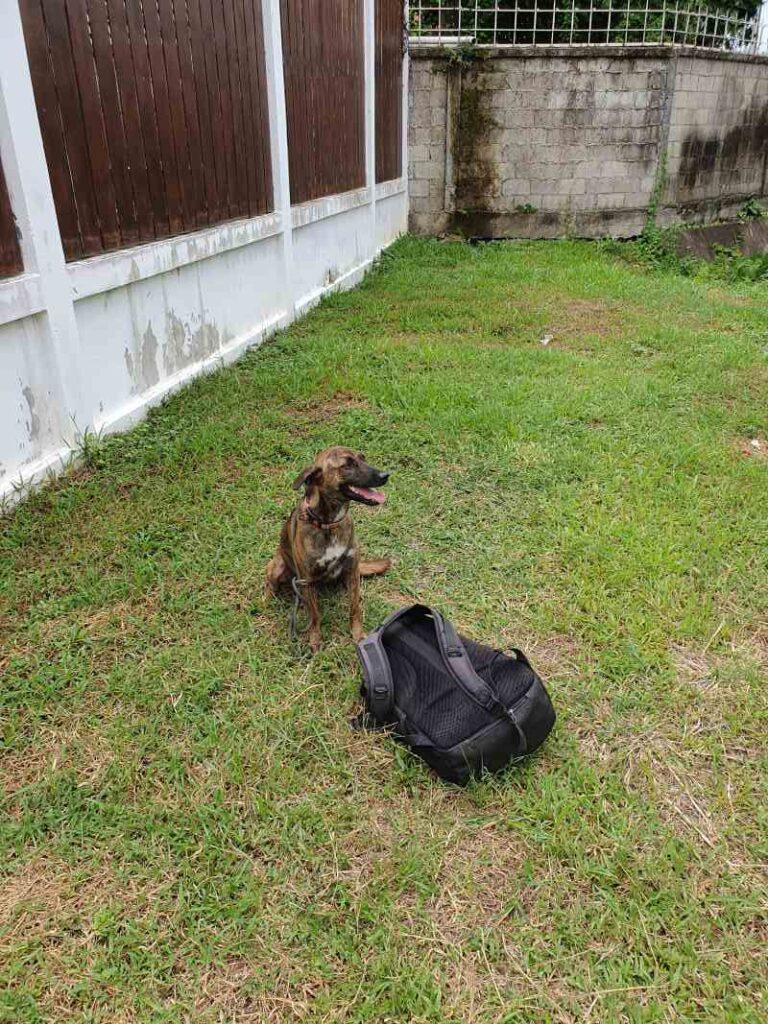
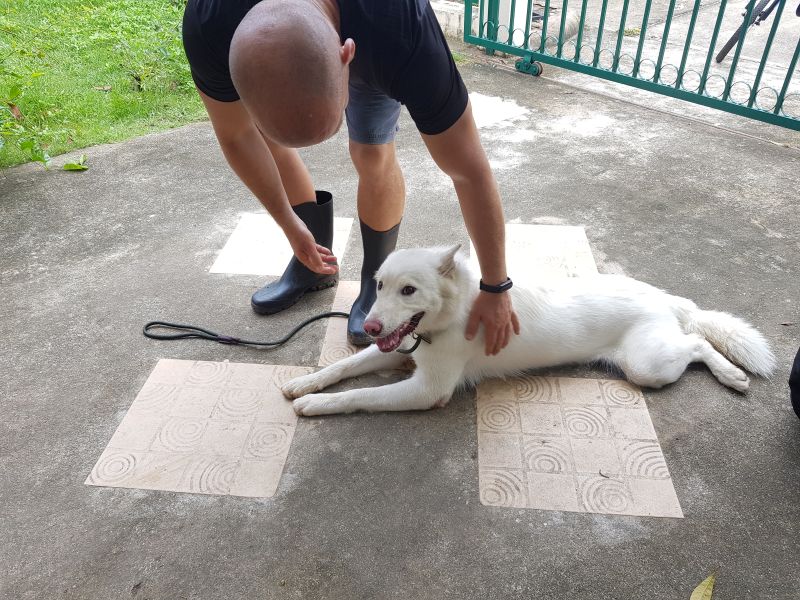
Growth isn’t linear—but connection is timeless.
While behaviours change, the need for safety, guidance, and meaning never fades. When we honour each phase as a chance to deepen understanding, the dog we raise becomes the soul that stays.
Adult Stage (1-7 years): Personality Consolidation
Your dog’s adult years represent behavioral stability and peak performance. By age two, most dogs have developed their core personality traits, though refinement continues throughout adulthood. This is the golden period where your years of puppy training pay off, and you finally have the dog you’ve been working toward—mostly! Think of it as the professional phase of your dog’s life, where they’ve graduated from the chaos of youth and settled into their authentic self.
The Neurological Plateau
Adult dogs have achieved full neurological maturity, bringing several advantages:
Complete Myelination The fatty sheaths around nerve fibers are fully developed, resulting in:
- Faster processing speed: Quick decision-making abilities
- Efficient communication: Smooth coordination between brain regions
- Stable responses: Predictable reactions to stimuli
- Enhanced learning: Though slower than puppyhood, more deliberate and lasting
Neurotransmitter Stability Brain chemistry reaches equilibrium:
- Serotonin levels stabilize, promoting emotional balance
- Dopamine regulation improves, enhancing impulse control
- GABA function matures, providing better anxiety management
- Oxytocin bonding deepens with established relationships
This neurological stability means your adult dog can:
- Focus for extended periods
- Regulate emotions effectively
- Learn complex, chained behaviors
- Maintain consistent performance
The Big Five Personality Dimensions
Research has identified five core personality dimensions in adult dogs, remarkably similar to human personality structure:
1. Fearfulness/Neuroticism This dimension encompasses:
- Anxiety levels: Baseline worry and stress
- Recovery speed: How quickly they bounce back from scares
- Environmental sensitivity: Reaction to changes
- Coping strategies: Hiding, seeking comfort, or freezing
Dogs high in fearfulness might:
- Startle at unexpected sounds
- Show caution in new environments
- Prefer predictable routines
- Need extra support during changes
Dogs low in fearfulness typically:
- Approach novelty with confidence
- Recover quickly from surprises
- Adapt easily to change
- Show resilience under stress
2. Aggression Toward People This includes:
- Stranger wariness: Comfort with unknown humans
- Resource protection: Guarding tendencies
- Handling sensitivity: Tolerance for physical interaction
- Trust levels: Ease of forming human bonds
This dimension exists on a spectrum from:
- Indiscriminately friendly → Selective → Wary → Defensive → Aggressive
Most adult dogs fall in the selective range, showing preference for known humans while remaining neutral to polite with strangers.
3. Activity/Excitability Energy and arousal patterns including:
- Baseline activity: Resting vs. moving preferences
- Arousal speed: How quickly they amp up
- Settling ability: Return to calm state
- Stimulation needs: Mental and physical requirements
High activity dogs:
- Need 2+ hours of engaged activity daily
- Show restlessness without adequate stimulation
- Excel in dog sports and working roles
- May develop problematic behaviors if under-stimulated
Low activity dogs:
- Content with moderate exercise
- Self-regulate activity levels
- Prefer calm environments
- May need encouragement to maintain fitness
4. Responsiveness to Training/Tractability This encompasses:
- Biddability: Desire to please humans
- Focus maintenance: Attention span during training
- Problem-solving approach: Independent vs. collaborative
- Frustration tolerance: Persistence with challenges
Highly trainable dogs:
- Eagerly offer behaviors
- Remember commands long-term
- Generalize learning across contexts
- Find human interaction rewarding
Less biddable dogs:
- Require higher value motivation
- Think independently
- May question the point of requests
- Excel when training aligns with natural drives
5. Aggression Toward Animals Reactions to other animals:
- Dog-dog sociability: Play interest and style
- Prey drive intensity: Response to small animals
- Resource competition: Sharing abilities
- Communication skills: Body language fluency
This dimension includes:
- Dog social → Dog tolerant → Dog selective → Dog aggressive
- Low prey drive → Moderate → High → Extreme
Personality Stability and Change
While core traits stabilize by age two, personality isn’t completely fixed:
Stable Elements
- Basic temperament (confident vs. cautious)
- Energy levels and arousal patterns
- Social preferences
- Learning style
- Stress response patterns
Changeable Aspects
- Specific fears (can be overcome)
- Training responsiveness (can improve)
- Social skills (can develop)
- Coping mechanisms (can be taught)
- Activity preferences (can shift with lifestyle)
Life Experience Influence Adult personality continues to be shaped by:
- Positive experiences reinforce confidence
- Negative events can create new fears
- Consistent training improves tractability
- Social exposure maintains friendliness
- Work/purpose enhances focus and drive
Attachment Patterns in Adult Dogs
The human-animal bond reaches its full depth during adulthood, with four primary attachment styles:
Secure Attachment (65% of dogs) Characteristics:
- Greet owner warmly but not frantically
- Explore confidently with owner as base
- Seek comfort when stressed
- Recover quickly from separations
These dogs show:
- Balanced independence and affection
- Appropriate stranger interactions
- Good emotional regulation
- Resilience in new situations

Anxious-Ambivalent Attachment (20% of dogs) Behaviors include:
- Excessive proximity seeking
- Difficulty settling when owner is present
- Extreme distress during separation
- Clingy, demanding interactions
Contributing factors:
- Inconsistent owner availability
- Reinforced anxiety behaviors
- Early separation trauma
- Genetic predisposition
Avoidant Attachment (10% of dogs) Signs include:
- Limited comfort-seeking
- Independent to a fault
- Minimal separation distress
- Aloof with affection
Often results from:
- Early independence requirements
- Punishment-based training
- Limited early bonding
- Breed tendencies (some primitive breeds)
Disorganized Attachment (5% of dogs) Characterized by:
- Inconsistent approach-avoid behaviors
- Unpredictable responses to owner
- Conflicted social signals
- Difficulty predicting owner needs
Usually stems from:
- Traumatic backgrounds
- Multiple home changes
- Inconsistent or frightening owners
- Neurological issues
Working Relationships and Purpose
Adult dogs thrive with purpose, whether formal work or informal jobs:
Professional Working Dogs Peak performance occurs during adult years:
- Service dogs: Master complex task chains
- Detection dogs: Refine scent discrimination
- Herding dogs: Develop livestock intuition
- Protection dogs: Balance drive with control
Pet Dogs with Purpose Even companions benefit from “jobs”:
- Carrying backpacks on walks
- Finding hidden toys daily
- “Helping” with household tasks
- Participating in dog sports
- Therapy dog volunteering
Dogs with purpose show:
- Increased confidence
- Better behavior overall
- Stronger human bonds
- Enhanced cognitive function
- Greater life satisfaction
Social Maturity and Relationships
Social maturity, distinct from sexual maturity, typically occurs between 18-36 months:
Changes in Dog-Dog Relationships
- Selectivity increases: Not all dogs are friends
- Play style modifies: Less tolerant of rude behavior
- Same-sex tensions: May emerge, especially in same-breed pairs
- Pack dynamics: Establish stable hierarchies
Breed and Sex Influences
- Males: Often more easy-going with casual acquaintances
- Females: May form stronger friendships but also rivalries
- Terriers: Increased dog selectivity common
- Herding breeds: May prefer familiar dogs
- Gun dogs: Often maintain social flexibility
Managing Social Changes
- Respect your dog’s preferences
- Don’t force friendships
- Maintain positive associations
- Consider structured activities over dog parks
- Monitor body language closely
Cognitive Abilities in Adulthood
Adult dogs display remarkable cognitive abilities:
Problem-Solving Skills
- Causal reasoning: Understanding cause and effect
- Planning abilities: Anticipating outcomes
- Tool use: Some dogs spontaneously use objects
- Deception: Deliberately misleading for gain
- Metacognition: Knowing what they know
Memory Systems
- Working memory: 2-3 minute retention
- Long-term memory: Lifetime retention possible
- Episodic memory: Remembering specific events
- Semantic memory: General knowledge
- Procedural memory: Physical skills
Social Intelligence
- Theory of mind: Understanding others have different knowledge
- Emotional contagion: Catching human emotions
- Perspective-taking: Adjusting behavior based on human attention
- Cooperation: Working together toward goals
- Teaching: Some dogs deliberately show others
Health and Behavior Interconnection
Adult behavioral changes often signal health issues:
Subtle Health Indicators
- Irritability increase: May indicate pain
- Activity decrease: Could signal illness
- Appetite changes: Digestive or dental issues
- Sleep disruption: Discomfort or anxiety
- Social withdrawal: Often first sign of problems
Common Adult Health-Behavior Links
- Hypothyroidism: Lethargy, weight gain, aggression
- Arthritis: Reluctance to play, irritability
- Dental disease: Food dropping, toy avoidance
- Vision changes: Startling, navigation issues
- Allergies: Restlessness, irritability
Preventive Behavioral Health
- Annual behavioral assessments
- Document baseline behaviors
- Track subtle changes
- Address issues early
- Maintain physical health
Lifestyle Optimization for Adult Dogs
Creating the ideal adult lifestyle requires balancing multiple factors:
Exercise Requirements
- Working breeds: 2+ hours combined physical/mental
- Sporting breeds: 60-90 minutes active exercise
- Toy breeds: 30-60 minutes, adjusted for size
- Giant breeds: Moderate exercise, joint protection
- Senior adults (5-7): Gradual reduction in intensity
Mental Stimulation Adult brains need challenges:
- Novel training weekly
- Rotation of puzzle toys
- Scent work games
- Environmental enrichment
- Social interactions
Routine vs. Novelty Balance
- 70% routine: Predictable schedule for security
- 30% novelty: New experiences for engagement
- Vary walking routes
- Introduce new activities gradually
- Maintain core structure
Communication Refinement
Adult dogs develop sophisticated communication:
Subtle Body Language
- Micro-expressions convey complex emotions
- Context-dependent signals
- Individual variations develop
- Multi-modal communication
Vocal Sophistication Many adults develop specific vocalizations:
- Greeting whines for special people
- Play growls distinct from warnings
- Attention-seeking barks
- Conversational grumbles
Human-Directed Communication
- Pointing with nose or paw
- Leading humans to needs
- Eye contact for requests
- Modified behaviors for human understanding
The Prime Years: Making the Most
Your dog’s adult years offer unique opportunities:
Deepen Your Bond
- Engage in partnership activities
- Learn your dog’s subtle communications
- Respect their preferences
- Share quiet companionship
- Build trust through consistency
Expand Experiences
- Travel together (if they enjoy it)
- Try new activities
- Meet their friends regularly
- Provide appropriate challenges
- Document your journey
Prepare for the Future
- Maintain preventive healthcare
- Keep them physically fit
- Provide mental stimulation
- Build positive associations with handling
- Create lasting memories
Remember, these adult years are when your dog is truly themselves—honor who they’ve become while continuing to support their growth. The stable adult dog you see today is the culmination of genetics, early experiences, and your ongoing relationship. Treasure this peak period while laying groundwork for graceful aging ahead. 🧡

Senior Stage (7+ years): Wisdom and Change
The transition to seniorhood varies by breed—giant breeds may show signs as early as 5-6 years, while small breeds might not until 9-10 years. This stage brings both the wisdom of experience and new behavioral challenges. Your senior dog has accumulated a lifetime of knowledge, developed deep bonds, and settled into well-worn routines. Yet this period also demands adaptation as physical and cognitive changes reshape their world. It’s a bittersweet phase where every gray muzzle hair represents years of shared adventures, and every slower step reminds us to treasure the present moment.
Understanding the Aging Process
Aging isn’t just about getting older—it’s a complex biological process affecting every system:
Cellular Changes
- Telomere shortening: Cellular aging markers decrease
- Oxidative stress: Free radical damage accumulates
- Mitochondrial dysfunction: Energy production declines
- Protein aggregation: Cellular debris builds up
- DNA damage: Repair mechanisms slow
These microscopic changes manifest as:
- Reduced stamina and energy
- Slower healing and recovery
- Increased vulnerability to stress
- Greater susceptibility to disease
- Cognitive processing changes
Brain Aging Patterns The senior brain undergoes specific changes:
- Volume reduction: Up to 25% in severe cases
- Ventricular enlargement: Fluid-filled spaces expand
- White matter loss: Communication between regions slows
- Neurotransmitter decline: Especially acetylcholine and dopamine
- Beta-amyloid accumulation: Similar to human Alzheimer’s
Yet remarkably, the senior brain retains:
- Crystallized intelligence (learned knowledge)
- Emotional processing abilities
- Long-term memory stores
- Social recognition
- Routine execution
Canine Cognitive Dysfunction (CCD): The Dementia of Dogs
CCD affects up to 68% of dogs by age 15-16, yet often goes unrecognized. Understanding this condition helps you provide better support:
The DISHAAL Acronym Veterinarians use this to assess cognitive dysfunction:
D – Disorientation
- Getting lost in familiar places
- Staring at walls or into space
- Going to wrong side of door
- Getting stuck in corners
- Failing to recognize familiar people
I – Interaction Changes
- Altered greetings (overly clingy or withdrawn)
- Reduced interest in petting
- Changes in play behavior
- Different responses to commands
- Personality shifts
S – Sleep-Wake Cycle Disturbances
- Night waking and pacing
- Day-night reversal
- Vocalization at night
- Inability to settle
- Excessive daytime sleeping
H – House Soiling
- “Forgetting” housetraining
- Not signaling need to go out
- Eliminating immediately after coming inside
- Loss of substrate preferences
- Incontinence vs. cognitive loss
A – Activity Level Changes
- Aimless wandering or pacing
- Repetitive behaviors
- Decreased exploration
- Loss of purposeful movement
- Compulsive licking or circling
A – Anxiety Increase
- Separation distress in previously confident dogs
- Fear of familiar objects
- Increased startle responses
- Generalized anxiety
- Panic without clear triggers
L – Learning and Memory Deficits
- Forgetting known commands
- Inability to learn new tasks
- Not recognizing familiar people/dogs
- Getting lost on familiar walks
- Forgetting location of food/water
Stages of CCD
- Mild: 1-2 signs, often dismissed as “normal aging”
- Moderate: 3-4 signs, noticeable impact on life
- Severe: 5+ signs, significant quality of life changes
The Neurological Basis Research reveals CCD involves:
- Accumulation of beta-amyloid plaques
- Tau protein tangles
- Reduced brain glucose metabolism
- Neurotransmitter imbalances
- Vascular changes
Sensory Decline: Navigating a Changing World
Sensory changes profoundly impact behavior:
Vision Loss Progressive changes include:
- Nuclear sclerosis: Bluish haze, minimal vision impact
- Cataracts: Cloudy lens, significant vision loss
- Progressive retinal atrophy: Gradual blindness
- Glaucoma: Painful pressure, rapid vision loss
Behavioral Adaptations to Vision Loss:
- Hesitation at stairs or curbs
- Bumping into furniture
- Startling when touched
- Following walls for navigation
- Reluctance to go outside at night
- Increased vocalization for reassurance
Supporting Blind/Vision-Impaired Dogs:
- Keep furniture in consistent locations
- Use verbal cues before touching
- Block off dangerous areas (stairs, pools)
- Create scent trails to important locations
- Use different textures for different areas
- Maintain consistent routines
Hearing Loss Deafness progression:
- High frequencies lost first
- Gradual reduction in range
- Complete deafness possible
- Often uneven between ears
Behavioral Changes with Deafness:
- Not responding to name
- Sleeping through noises
- Startling when touched while sleeping
- Increased visual vigilance
- Following other dogs’ cues
- Excessive barking (can’t self-monitor)
Adapting to Deaf Dogs:
- Use visual signals (hand signals, lights)
- Vibration for attention (stomp floor)
- Touch cues for communication
- Keep on leash in unsafe areas
- Wake gently to avoid startling
- Consider vibrating collar for recall
Smell and Taste Changes Though less dramatic than vision/hearing:
- Reduced scent discrimination
- Decreased appetite
- Changed food preferences
- Missing scent marks
- Reduced interest in sniffing
Pain and Its Behavioral Manifestations
Chronic pain affects up to 80% of senior dogs, yet they hide it well:
Subtle Pain Indicators
- Posture changes: Hunched back, tucked tail
- Gait alterations: Shorter strides, stiffness
- Activity modifications: Reluctance to jump, climb
- Behavioral shifts: Irritability, withdrawal
- Vocalization changes: Whimpering, groaning
Common Pain Sources
- Osteoarthritis: Most common, affects 80% by age 8
- Dental disease: Affects eating, play, mood
- Spinal issues: Disc disease, spondylosis
- Cancer: Various types increase with age
- Organ dysfunction: Kidney, liver, heart
Pain’s Behavioral Impact
- Increased aggression or fearfulness
- Reduced tolerance for handling
- Changes in sleep positions
- Reluctance to be touched
- Anxiety and restlessness
- Depression-like symptoms
Sleep Pattern Evolution
Senior dogs experience significant sleep changes:
Normal Senior Sleep
- Total sleep increases to 16-18 hours
- More frequent wake periods
- Lighter sleep phases
- Difficulty getting comfortable
- Position changes for pain relief
Abnormal Sleep Patterns
- Excessive night waking
- Inability to settle
- Vocalization during sleep
- Confusion upon waking
- Complete day-night reversal
Supporting Healthy Sleep
- Orthopedic bedding
- Night lights for navigation
- Consistent bedtime routine
- Pain management
- Calming supplements
- White noise for deaf dogs
Emotional and Social Changes
The senior emotional landscape shifts significantly:
Increased Vulnerability
- Lower stress tolerance
- Heightened anxiety
- Greater need for routine
- Reduced adaptability
- Stronger attachment needs
Social Modifications
- Less tolerance for boisterous dogs
- Preference for familiar companions
- Reduced play interest
- More selective interactions
- Increased human dependence
The Wisdom Factor Senior dogs often display:
- Better emotional regulation (when healthy)
- Efficient energy use
- Selective attention
- Experienced problem-solving
- Calm confidence
Anxiety in Senior Dogs
Anxiety often increases with age due to:
Contributing Factors
- Cognitive dysfunction
- Sensory loss creating uncertainty
- Physical discomfort
- Previous trauma resurfacing
- Neurochemical changes
Types of Senior Anxiety
- Separation anxiety: New or worsening
- Noise phobia: Increased sensitivity
- Generalized anxiety: Constant worry
- Sundowner syndrome: Evening confusion
- Location anxiety: Specific places
Management Strategies
- Environmental modification
- Predictable routines
- Calming supplements
- Medication when appropriate
- Comfort items
- Gentle reassurance
Maintaining Quality of Life
Quality of life assessment helps guide decisions:
The HHHHHMM Scale
- Hurt: Pain level management
- Hunger: Appetite and eating
- Hydration: Water intake
- Hygiene: Grooming needs
- Happiness: Joy in daily life
- Mobility: Movement ability
- More good days than bad
Enrichment for Seniors
Appropriate stimulation remains crucial:
Physical Activities
- Short, frequent walks
- Swimming for arthritic dogs
- Gentle stretching
- Balance exercises
- Massage therapy
Mental Stimulation
- Sniff games (easiest for impaired dogs)
- Simple puzzle feeders
- New but easy tricks
- Social visits
- Car rides (if enjoyed)
Emotional Support
- Increased affection
- Patience with changes
- Maintaining routines
- Celebrating small victories
- Creating comfort
Medical Management and Behavior
Integrative approaches optimize senior life:
Medications That Help
- Pain management (NSAIDs, gabapentin)
- Cognitive support (selegiline, propentofylline)
- Anxiety reduction (trazodone, gabapentin)
- Supplements (omega-3s, SAMe, antioxidants)
Alternative Therapies
- Acupuncture for pain
- Physical therapy
- Hydrotherapy
- Laser therapy
- Chiropractic care
The Human-Senior Dog Bond
The relationship deepens and changes:
Your Role Evolution
- From trainer to caregiver
- From activity partner to comfort provider
- From leader to support system
- From teacher to student of their needs
Gift of Senior Dogs
- Living in the moment
- Appreciating simple pleasures
- Demonstrating resilience
- Teaching about loss
- Showing unconditional love
Communication in Senior Years
Senior dogs develop unique communication:
Compensatory Behaviors
- Increased physical touch seeking
- More eye contact (if vision intact)
- Vocalization changes
- Following closely
- Novel attention-seeking
Understanding Their Needs
- “I’m confused” signals
- “I hurt” communications
- “I need help” requests
- “I’m scared” expressions
- “I love you” gestures
Creating a Senior-Friendly Environment
Environmental modifications support aging:
Physical Adaptations
- Ramps for elevation changes
- Non-slip surfaces
- Raised food/water bowls
- Easy-access bedding
- Night lights
- Baby gates for safety
Routine Adaptations
- More frequent, shorter outings
- Consistent meal times
- Predictable patterns
- Flexibility within structure
- Patience with pace
Preparing for the Future
While celebrating the present, prepare for changes:
Documentation
- Video typical behaviors
- Track changes objectively
- Note preferences
- Record happy moments
- Create memory books
Difficult Decisions
- Quality of life planning
- End-of-life preferences
- Emergency plans
- Support network building
- Grief preparation
Celebrating the Senior Years
These years offer unique gifts:
- Deepest companionship
- Quiet understanding
- Gentle adventures
- Precious moments
- Profound lessons
Your senior dog has given you their youth, energy, and devotion. Now they offer wisdom, patience, and the reminder that every moment together is precious. Supporting them through this phase—with all its challenges and changes—is one of the most profound acts of love in the human-animal bond.
Remember, senior doesn’t mean less valuable. It means differently abled, deeply experienced, and deserving of our most compassionate care. Every gray whisker has earned respect, every cloudy eye has seen years of love, and every stiff movement represents a lifetime of joyful adventures. Treasure this phase for the gift it is. 🧡
Evolution of Behavior Patterns Across Life Stages
Tracking Behavioral Trajectories
Understanding how specific behaviors change across the lifespan helps predict and manage age-related changes. Let’s explore key behavioral trajectories:
Activity Levels
- Puppy: Burst-rest cycles, 18-20 hours sleep
- Juvenile: Peak activity, 12-14 hours sleep
- Adult: Sustained moderate activity, 12-14 hours sleep
- Senior: Reduced activity, 16-18 hours sleep, more fragmented
Social Behavior
- Puppy: Indiscriminate friendliness, all dogs are friends
- Juvenile: Learning social rules, testing boundaries
- Adult: Selective socialization, established preferences
- Senior: Reduced tolerance for boisterous play, preference for familiar companions
Learning and Adaptability
- Puppy: Rapid learning, high neuroplasticity
- Juvenile: Peak learning capacity, some impulsivity
- Adult: Efficient learning, good impulse control
- Senior: Slower learning, reliance on established patterns
Stress Response The stress response system shows interesting changes across life stages:
- Young puppies show blunted cortisol responses (stress protection)
- Juveniles display heightened stress reactivity
- Adults develop efficient stress regulation
- Seniors may show either blunted or heightened responses
Environmental Influences on Behavioral Development
Urban vs. Rural Environments Dogs raised in different environments show distinct behavioral patterns:
Urban-raised dogs typically display:
- Better tolerance for crowds and noise
- More selective attention (filtering stimuli)
- Increased leash-walking skills
- Higher baseline arousal levels
- Greater variety in human and dog interactions
Rural-raised dogs often show:
- Stronger prey drive and chase behaviors
- Better off-leash reliability
- Lower tolerance for confinement
- More pronounced seasonal behavioral changes
- Stronger livestock awareness (if exposed)
These differences aren’t just training—they represent fundamental adaptations to environmental demands during critical developmental periods.
The Influence of Early Experiences
Positive Early Experiences: Building Resilience
The power of positive early experiences cannot be overstated. Puppies exposed to “enriched environments” show:
- Enhanced problem-solving abilities throughout life
- Better stress management and emotional regulation
- Increased behavioral flexibility
- Stronger human-animal bonds
- Reduced fear and anxiety responses
Creating Positive Experiences Simple interventions during early development yield lifelong benefits:
- Gentle handling exercises: 3-5 minutes daily from 3 days old
- Novel object exposure: Different textures, sounds, and movements
- Positive human interaction: Multiple handlers of different ages
- Environmental complexity: Varied surfaces, obstacles, and spaces
The Shadow of Early Trauma
Unfortunately, negative early experiences cast long shadows. Research on maternal separation and early trauma reveals:
Behavioral Consequences of Early Trauma:
- Hypervigilance and increased startle responses
- Difficulty forming secure attachments
- Increased aggression or extreme fearfulness
- Compulsive behaviors (excessive licking, tail chasing)
- Altered stress hormone regulation
However, there’s hope. The canine brain retains remarkable plasticity, and patient, consistent rehabilitation can help traumatized dogs develop new, healthier behavioral patterns. This process requires understanding that these dogs aren’t “bad”—they’re operating from a different neurological baseline.
Rehabilitation Strategies:
- Predictable routines to build security
- Gradual desensitization to triggers
- Positive reinforcement-based training
- Environmental management to prevent overwhelm
- Sometimes, appropriate medication to support behavioral work
Training Methods: Long-term Impact
The training methods used during development profoundly influence adult behavior. Let’s examine the evidence:
Positive Reinforcement Training produces:
- Increased enthusiasm for learning
- Better problem-solving skills
- Stronger owner-dog bonds
- Lower stress during training
- Reduced aggression and fear responses
Punishment-based Training often results in:
- Increased anxiety and stress responses
- Suppressed behavior rather than true learning
- Potential for redirected aggression
- Damaged trust in the human-dog relationship
- Higher risk of behavioral problems
The science is clear: dogs trained with positive methods show better long-term behavioral outcomes and stronger relationships with their owners. This doesn’t mean being permissive—structure and boundaries are essential—but they should be taught through guidance rather than intimidation.
Role of Breed, Environment, and Owner Interaction
Breed-Specific Behavioral Development
While every dog is an individual, breed tendencies significantly influence behavioral development trajectories:
Working Breeds (German Shepherds, Border Collies, Belgian Malinois):
- Early emergence of work drive (8-12 weeks)
- High trainability but need for mental stimulation
- Potential for frustration-based behaviors without adequate outlets
- Strong handler focus and environmental awareness
- Extended juvenile period with high energy
Companion Breeds (Golden Retrievers, Labradors, Cavaliers):
- Prolonged friendly puppy demeanor
- Lower arousal thresholds for social interaction
- Generally easier frustration tolerance
- Strong food motivation throughout life
- Earlier behavioral maturity
Terrier Breeds:
- Early prey drive development
- Independent problem-solving tendencies
- Persistent and determined personalities
- Potential for dog-selective behavior in adulthood
- High activity needs throughout life
Understanding breed tendencies helps set realistic expectations and tailor management strategies throughout your dog’s life.
The Owner Factor: How You Shape Your Dog’s Behavior
Your personality, consistency, and interaction style profoundly influence your dog’s behavioral development. Research reveals fascinating connections:
Owner Personality and Dog Behavior:
- Neurotic owners tend to have more anxious dogs
- Extroverted owners often have more sociable dogs
- Conscientious owners typically have better-trained dogs
- Agreeable owners may have friendlier but less disciplined dogs
Attachment Style Transfer: Your attachment style influences your dog’s behavior:
- Secure owners provide consistent, responsive care, leading to confident dogs
- Anxious owners may inadvertently reinforce clingy, anxious behaviors
- Avoidant owners might create either overly independent or anxiously attached dogs
- Disorganized owners often have dogs with unpredictable behavioral patterns
This isn’t about judgment—it’s about awareness. Understanding your own patterns helps you provide better support for your dog’s behavioral development.
Consistency: The Golden Rule
Perhaps no factor influences behavior more than consistency. Dogs thrive on predictability because it allows them to:
- Understand expectations clearly
- Feel secure in their environment
- Learn efficiently
- Develop emotional regulation
Inconsistency, whether in rules, routines, or emotional responses, creates anxious, confused dogs who may develop problematic behaviors as coping mechanisms.
Predictive Biomarkers and Assessment Tools
Modern Tools for Behavioral Assessment
Science has given us remarkable tools for understanding and predicting behavioral changes:
Cognitive Function Tests Standardized assessments now exist to measure:
- Problem-solving ability
- Memory function
- Learning speed
- Attention span
- Executive function
These tests, administered at different life stages, can identify early cognitive decline or exceptional abilities, allowing for targeted interventions.
Behavioral Scoring Systems Validated scoring systems help track behavior objectively:
- Puppy tests: Predict adult temperament with 60-70% accuracy
- Adult assessments: Measure personality dimensions
- Senior evaluations: Identify cognitive dysfunction early
Physiological Measures Modern technology allows us to measure:
- Heart Rate Variability (HRV): Indicates stress resilience
- Cortisol patterns: Reveal chronic stress or adaptation
- Activity monitors: Track sleep quality and movement patterns
- Eye tracking: Assesses cognitive function and attention
The Promise of Predictive Technology
Machine learning algorithms analyzing behavioral data can now:
- Predict onset of cognitive dysfunction 6-12 months early
- Identify dogs at risk for separation anxiety
- Match puppies to optimal homes based on behavioral profiles
- Track rehabilitation progress in traumatized dogs
These tools don’t replace careful observation and intuition but enhance our ability to provide proactive, personalized care throughout our dogs’ lives.
Creating Lifelong Behavioral Wellness
Age-Appropriate Enrichment
Supporting healthy behavioral development requires age-appropriate challenges:
Puppy Enrichment (0-6 months):
- Puzzle feeders with easy solutions
- Varied textures and surfaces
- Gentle exposure to novel experiences
- Short, positive training sessions
- Supervised social play
Juvenile Enrichment (6-12 months):
- Increased puzzle difficulty
- Structured training classes
- Appropriate physical exercise
- Varied social experiences
- Introduction to dog sports or activities
Adult Enrichment (1-7 years):
- Complex problem-solving tasks
- Sustained physical activities
- Advanced training goals
- Meaningful work or purpose
- Social maintenance
Senior Enrichment (7+ years):
- Gentler physical activities
- Scent work and nose games
- Routine with gentle variations
- Comfort-focused modifications
- Cognitive support games
Recognizing and Responding to Change
Being attuned to behavioral changes helps you support your dog through life transitions:
Green Flags (Positive Development):
- Increasing calmness with maturity
- Growing confidence in new situations
- Improved impulse control
- Deepening bond with family
- Appropriate play modifications with age
Yellow Flags (Monitor Closely):
- Subtle changes in routine
- Mild increases in anxiety
- Occasional confusion
- Slight reduction in play interest
- Minor sleep pattern changes
Red Flags (Seek Professional Help):
- Sudden aggression or fear
- Dramatic personality changes
- Loss of house training
- Excessive vocalization
- Disorientation or confusion
- Significant sleep disturbances
Early intervention for behavioral changes often prevents more serious problems from developing.
The Role of Preventive Care
Behavioral wellness is intrinsically linked to physical health:
Regular Veterinary Care:
- Annual senior panels after age 7
- Thyroid function testing
- Pain assessment
- Sensory evaluation
- Cognitive function screening
Nutritional Support:
- Age-appropriate diets
- Cognitive support supplements (omega-3s, antioxidants)
- Joint support for mobility
- Digestive health maintenance
Physical Wellness:
- Appropriate exercise for life stage
- Weight management
- Dental health
- Grooming and comfort
Remember, many behavioral changes in senior dogs stem from physical discomfort or medical issues rather than true behavioral problems.
Building a Lifetime of Trust
The Journey Together
Every phase of your dog’s life offers unique joys and challenges. Understanding the natural progression of behavioral development helps you:
- Appreciate each stage for what it offers
- Prepare for upcoming changes
- Provide appropriate support
- Deepen your bond through understanding
Your role evolves too—from teacher and protector in puppyhood to partner in adulthood and gentle caregiver in the senior years. This evolution enriches both your lives.
Celebrating Individual Differences
While we’ve explored typical patterns, remember that every dog is unique. Your dog might:
- Mature faster or slower than average
- Show breed-atypical behaviors
- Surprise you with unexpected changes
- Maintain puppy-like qualities into old age
- Develop wisdom beyond their years
These individual differences make the journey special. Embrace them while using knowledge of typical patterns as a helpful guide.
Conclusion: A Lifetime of Learning
Understanding behavioral development across your dog’s lifespan transforms you from reactive to proactive in your care. You can anticipate needs, prevent problems, and provide targeted support at every stage. Most importantly, this knowledge deepens your appreciation for the remarkable journey from helpless newborn to wise senior companion.
Whether you’re raising a puppy, enjoying adult years, or cherishing a senior, remember that every day offers opportunities for connection and growth. Your dog’s behavioral journey is a story written together—make it one of understanding, patience, and love.
Is this knowledge helping you see your dog in a new light? Each wagging tail tells a story of development, adaptation, and the incredible plasticity of the canine mind. From those first uncertain steps to the dignified pace of senior years, your dog’s behavioral evolution is a testament to the remarkable bond between our species. 🐾
Next, we’ll explore specific strategies for supporting your dog through major life transitions, because understanding development is just the beginning—applying this knowledge with compassion and skill creates the foundation for a lifetime of mutual joy and understanding.


